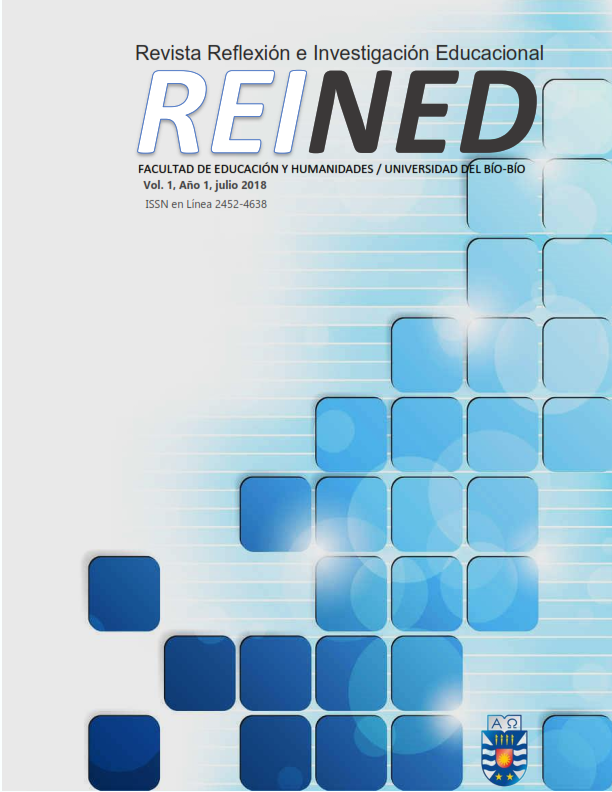Diseño de una propuesta de intervención para mejorar las habilidades sociales en alumnos con TDAH
Contenido principal del artículo
Resumen
El Trastorno por Déficit de Atención y/o Hiperactividad (TDAH) es un síndrome que dificulta tanto el proceso de aprendizaje de los alumnos como las relaciones que establecen con sus iguales, debido a las características que los definen. Por esta razón, se estima necesario generar una propuesta de intervención que promueva el desarrollo de las habilidades sociales de niños y niñas con TDAH y así apoyar a la comunidad educativa con estrategias que favorezcan la labor formativa. De este modo, se apuesta por una metodología activa, pues se considera esencial que las actividades sean lúdicas y los materiales atractivos para potenciar la adquisición de los conocimientos establecidos en estas áreas. Además, se considera trascendental involucrar a docentes y familia en el proceso de formación, entendiendo que los ámbitos de socialización primaria y secundaria son los que otorgan a los niños los límites y normas esenciales para convivir con el entorno. Es así como esta propuesta ofrece orientaciones que apuntan a dicho involucramiento, con el fin de garantizar un proceso de aprendizaje adecuado no sólo a nivel académico, sino también a nivel personal.
Detalles del artículo
Citas
Almir, D. y Aparecida, Z. (2013). Programas eficaces de entrenamiento en habilidades sociales basaos en métodos vivenciales. Apuntes de Psicología, 31(3), 67-76
Alvord, J. (1974). Economía de fichas. México: Editorial Ciencia de la Conducta.
Amador Campos, J. A., Idiázabal Alecha, M. A., Sangorrín García, J., Espadaler Gamissans, J. M. y Forns i Santacana, M. (2002). Utilidad de las escalas de Conners para discriminar entre sujetos con y sin trastorno por déficitde atención con hiperactividad. Psicothema, 14(2), 350-356.
American Psychiatric Association [APA] (2013). Diagnostic and Statistical Manual of Mental Disorders. Fifth Edition (Washington, DC: American Psychiatric Association).
Anastopoulos, A., Smith, J. y Wein, E. (1998). Counseling and Training Parents. En R. Barkley, (Eds.), Attention Deficit Hyperactivity Disorder: Ahandbookfor diagnosis and treatment (pp. 373-394). New York: The Guilford Press.
Bieber, J. (1994). Learning disabilities and social skillswith Richard La Voie: Lastonepicked. Firston epickedon. Washington, DC: Public Broadcasting Service.
Caballo, V. (2005). Manual de Evaluación y entrenamiento de las habilidades sociales. (6° Edición). Madrid: Siglo XXI.
Calderón, C. (2001). Resultados de un programa de tratamiento cognitivo-conductual para niños con Trastorno por déficit de atención con hiperactividad. Anuario de Psicología, 32(4), 79-98.
Gil Rodríguez, F., León Rubio, J. y Jarana Expósito, L. (Eds) (1995). Habilidades sociales y salud, Madrid: Pirámide.
Kennedy, J. (1992). Relationship of maternal beliefs and childrearing strategiesto social competence in preschool children. Child Study Journal, 22(1), 39-61
Llenas, A. (2012). El Monstruo de los Colores. Editorial: Flamboyant.
López, G., López, L. y Díaz, A. (2015). Trastorno por déficit de atención con hiperactividad (TDAH) y actividad física. Revista digital de educación física, 6(32), 53-65.
Martín, X. (1992). El role-playing, una técnica para facilitar la empatía y la perspectiva social. Comunicación, Lenguaje y Educación, 15, 63-67.
Mitlin, M. (2008). Juego, El bingo de las emociones. Madrid: TEA Ediciones, Departamento de I+D.
Monjas Casares, M. (2002). Programa de enseñanza de habilidades de intervención social (PEHIS) para niños y niñas en edad escolar. Madrid: CEPE.
Ovejero Bernal, A. (1998). Las habilidades sociales y su entrenamiento en el ámbito escolar. En F. Gil y J. León (comp.) Habilidades sociales. Teoría, investigación e intervención (pp. 169-185). Madrid: Síntesis Psicológica.
Pardos, A., Fernández-Jaén, A., y Martín, D. (2009). Habilidades sociales en el trastorno por déficit de atención/hiperactividad. Revista de Neurología, 48, 107- 111.
Rodríguez-Salinas, E., Navas, M., González, P., Fominaya, S., Duelo, M. (2006). La escuela y el trastorno por déficit de atención con/sin hiperactividad (TDAH). Revista Pediatría de Atención Primaria. 8(4), S175-98.
Weiss, G., Minde, K., Werry, J., Douglas, V. y Nemeth, E. (1971). Studie son the hyperactive child, VIII. Five year follow-up. Archives of General Psychiatry, 24, 409-414.
Young, S., Fitzgerald, M. y Postma, M. J. (2013). Libro Blanco sobre el trastorno por déficit de atención con hiperactividad (TDAH): propuestas políticas para abordar el impacto social, el coste y los resultados a largo plazo en apoyo a los afectados. Recuperado de http://new.fundacioncadah.org/j289eghfd7511986_uploads/20130911_hfh4VpcqhX7EVSqWNvS3_0.pdf

